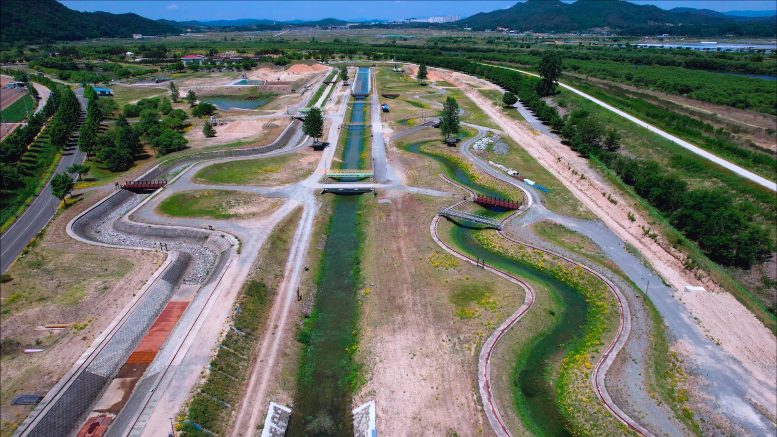
The River Experiment Center in Andong has three straight and curved experimental water channels with dimensions of 700m(L)*11m(W)*2m(H), and operates a laboratory for empirical testing of dike failure and urban flood defense technologies. Credit: Korea Institute of Civil Engineering and Building Technology
To reduce marine debris, which causes serious environmental pollution in the sea, researchers at the Korea Institute of Civil Engineering and Building Technology (KICT, President Kim, Byung-suk) have developed a technology for reducing floating debris in rivers.
Since the river is the main transportation channels for land-originated marine debris, the research team led by Dr. Sang Hwa Jung launched a living lab project involving local governments, local citizens, and experts.
Chungcheongnam-do (also known as Chungcheongnam Province and Chungnam) has the third longest coastline in South Korea, with a total of 500 rivers and streams in the region. The amount of marine debris in Chungnam has been increasing every year, and marine debris flowing in through rivers accounts for about 61.2% of the total. Accordingly, Chungnam installed and operated an interceptor facility in 2019, but structural damage occurred during heavy rains and floods, which needed to be resolved. The main reason for this damage is that the structure and functions of the interceptor were not designed in consideration of the geometry and characteristics of the river (water level, width, flow rate, water level change, etc.).
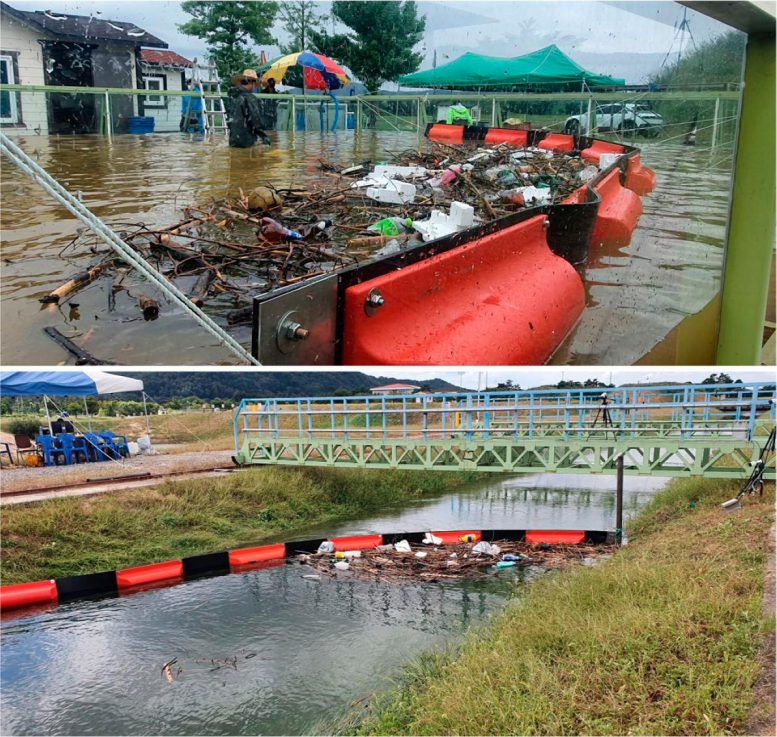
To enhance the real-world applicability of the AI analysis technology, image data from square basin and full-scale experimental channel were obtained and utilized. Credit: Korea Institute of Civil Engineering and Building Technology
Interceptor Facility Development and Testing
In addition to ensuring the structural safety of the interceptor, the project’s key objectives were to develop and test an interceptor facility with collection support functions for convenience of collection, responsiveness to changes in water levels of rivers, and monitoring functions to identify appropriate collection timing.
Dr. Jung’s research team conducted research in the following stages: characterization of the target river, selection of the optimal river point, design of the barrier, support piles, and connections, and on-site construction of the interceptor facility. In particular, the design and construction of the interceptor facility was carried out jointly with Foresys Co., Ltd., and the numerical model experiment and full-scale empirical tests were carried out at the River Experiment Center in Andong, Gyeongsangbuk-do.
The River Experiment Center covers an area of 192,051 m2. The center has the largest testing infrastructure in South Korea with a flow supply capacity of up to 10 m3/s, providing an optimal empirical testing infrastructure.
A view of the river floating trash interceptor facility installed at the downstream branch of the Yugu-cheon in Gongju, Chungcheongnam-do. The barrier is designed to withstand a load of 100 tons and is combined with support piles with connections that can be moved up and down to respond to changes in water levels. Provided drone footage by Foresys. Credit: Korea Institute of Civil Engineering and Building Technology
Implementation and AI Integration
Utilizing the outcomes of this study, an interceptor facility was constructed and put into operation in May 2023 on the Yugu-cheon (also known as Yugu Stream) located in Gongju, Chungnam. During the project, a monitoring system was built based on the opinions of local governments to determine the appropriate collection time and check real-time information on the operation status.
Based on the image data acquired through this, a support system was also developed. It uses artificial intelligence (AI) to analyze the amount and composition of floating debris in the river and determine the appropriate collection cycle.
Impact and Future Prospects
“Garbage that enters the sea is difficult to collect due to its wide spreading nature and contains impurities (salts, mud, etc.) that increase the cost of the cleaning-up process, so it is necessary to intercept and collect it from rivers before it enters the sea,” said Dr. Jung. He also emphasized that “by combining traditional river engineering with advanced technologies such as information technology and AI, these technologies can solve local problems and global environmental problems furthermore.”
The project is highly anticipated by the local community for the living lab-based convergence technology development and sustainability. The interceptor facility and monitoring system installed at Yugu-cheon will be in operation and continuously improved until 2026, and discussion with relevant local governments is underway to spread the results to other rivers in the future.
Funding: Ministry of Science and ICT


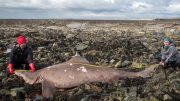

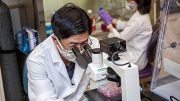



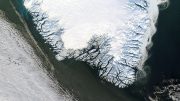
Be the first to comment on "Korea’s Revolutionary Trash Interceptor Tackles Marine Debris"